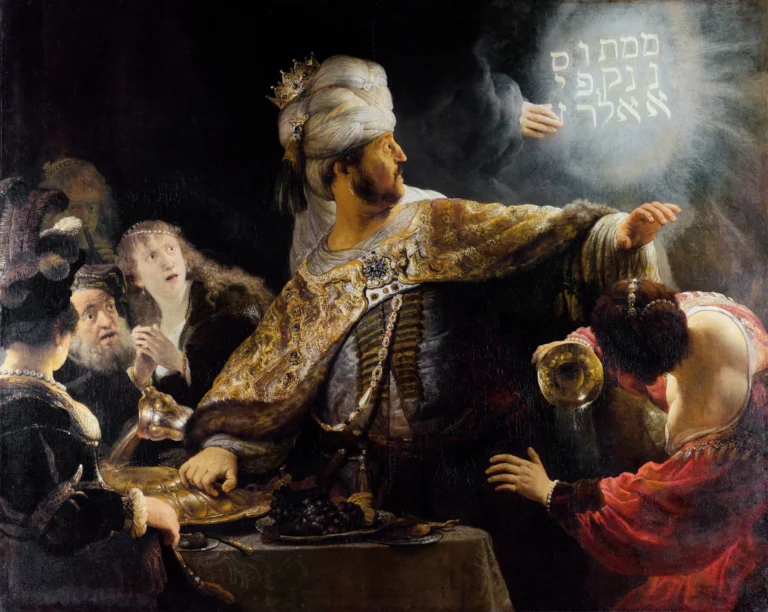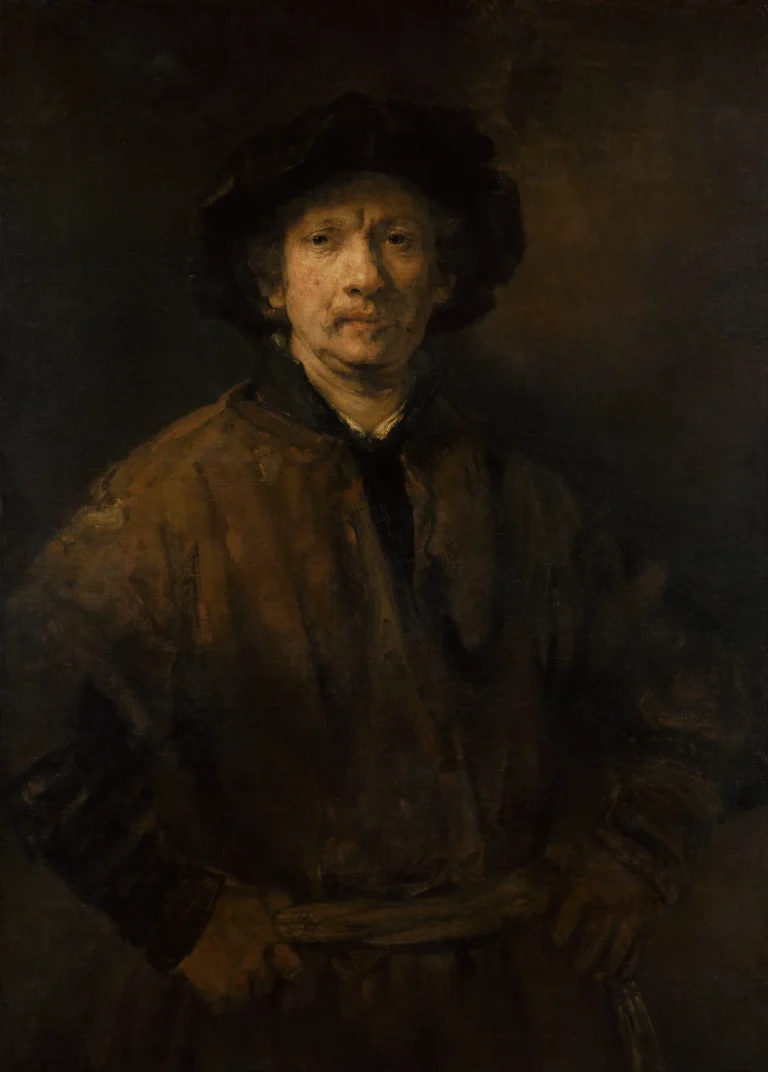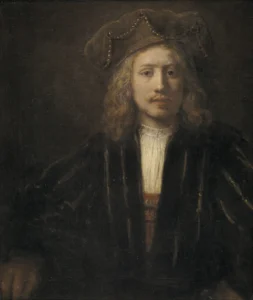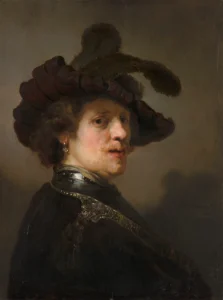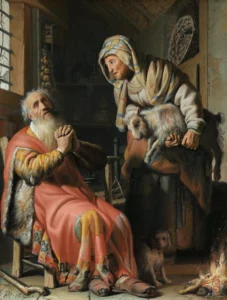Belshazzar's Feast
Belshazzar's Feast portrays the biblical story from the Book of Daniel where King Belshazzar of Babylon hosts a lavish feast using sacred vessels. As he revels, a hand appears, writing a prophetic message on the wall that foretells his downfall. Rembrandt's use of light and shadow creates a dramatic tableau, highlighting the characters' visceral reactions to the ominous event, representing themes of hubris and divine judgment.
Circa 1635-1638
About the Artwork
In the narrative of the painting, King Belshazzar conducts a grand banquet, indulging in opulence while disrespecting the sacred vessels from the Jerusalem temple. Just as he revels in his authority, a divine hand emerges, inscribing a fateful warning that only the prophet Daniel can interpret, signaling the end of his reign. This moment captivates viewers, reflecting Rembrandt's deep engagement with the story and his ability to portray intricate human emotions in tumultuous situations.
Did You Know
Liked what you see? Add it to your collection.
Enjoyed reading? Share it.
... continued
Biblical Source
The painting is based on the biblical account from the Book of Daniel (Chapter 5), where King Belshazzar of Babylon holds a grand feast using the sacred vessels looted from the Temple in Jerusalem by his father, Nebuchadnezzar. During the feast, a divine hand appears and writes a mysterious message on the wall: "Mene, mene, tekel, upharsin," which only the prophet Daniel can interpret. The message foretells the end of Belshazzar's kingdom and his imminent death.
Composition and Technique
The painting is characterized by its dramatic and dynamic composition, typical of the Baroque style. Rembrandt employs chiaroscuro, a technique that uses strong contrasts between light and dark to create a sense of drama and tension. The light emanates from the divine inscription on the wall, drawing the viewer's attention to the central message of the painting. The use of light and shadow adds to the emotional intensity of the scene, capturing the reactions of fear, awe, and confusion among the attendees.
Depiction of Characters
Belshazzar is depicted in luxurious attire, with a gold cloak, an enormous turban, and a tiny crown. His expression and posture convey shock and alarm as he gazes at the mysterious writing on the wall. Other figures in the painting include the queen, who appears distressed, and various attendants displaying a range of reactions to the sudden and ominous event.
Symbolism and Themes
The painting conveys themes of hubris and divine providence. The Babylonians' use of sacred vessels for a profane feast is seen as sacrilegious, and the divine message serves as a judgment on their actions. The illumination of the hand and the writing on the wall emphasizes the power of God over earthly powers. The chaos and confusion at the banquet contrast with the usual serenity of such gatherings, highlighting the disorder and chaos that can result from defying divine will.
Historical Context
Rembrandt painted Belshazzar's Feast during a period when he was establishing himself as a prominent artist in Amsterdam. The painting reflects his familiarity with Jewish traditions and his friendships with Jewish scholars, such as Menasseh ben Israel, who provided insights into the Talmudic interpretation of the biblical story.
Physical Details
The painting is an oil on canvas work, measuring 209.2 by 167.6 centimeters. It is housed at the National Gallery in London, where it is part of the museum's extensive collection.





